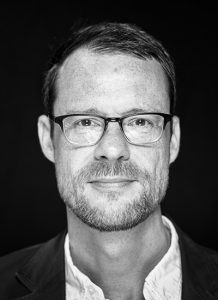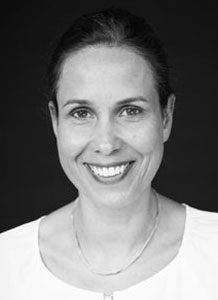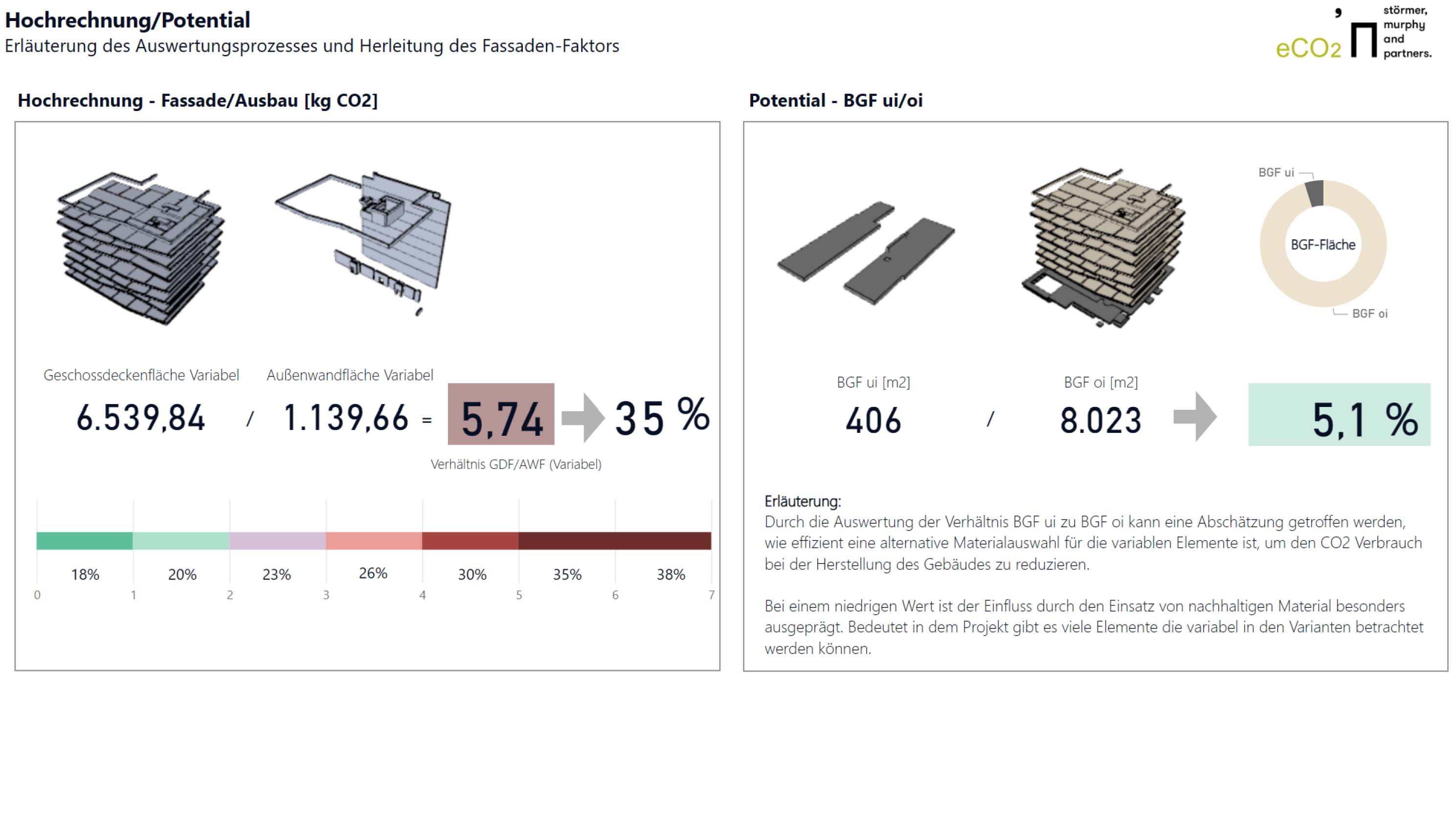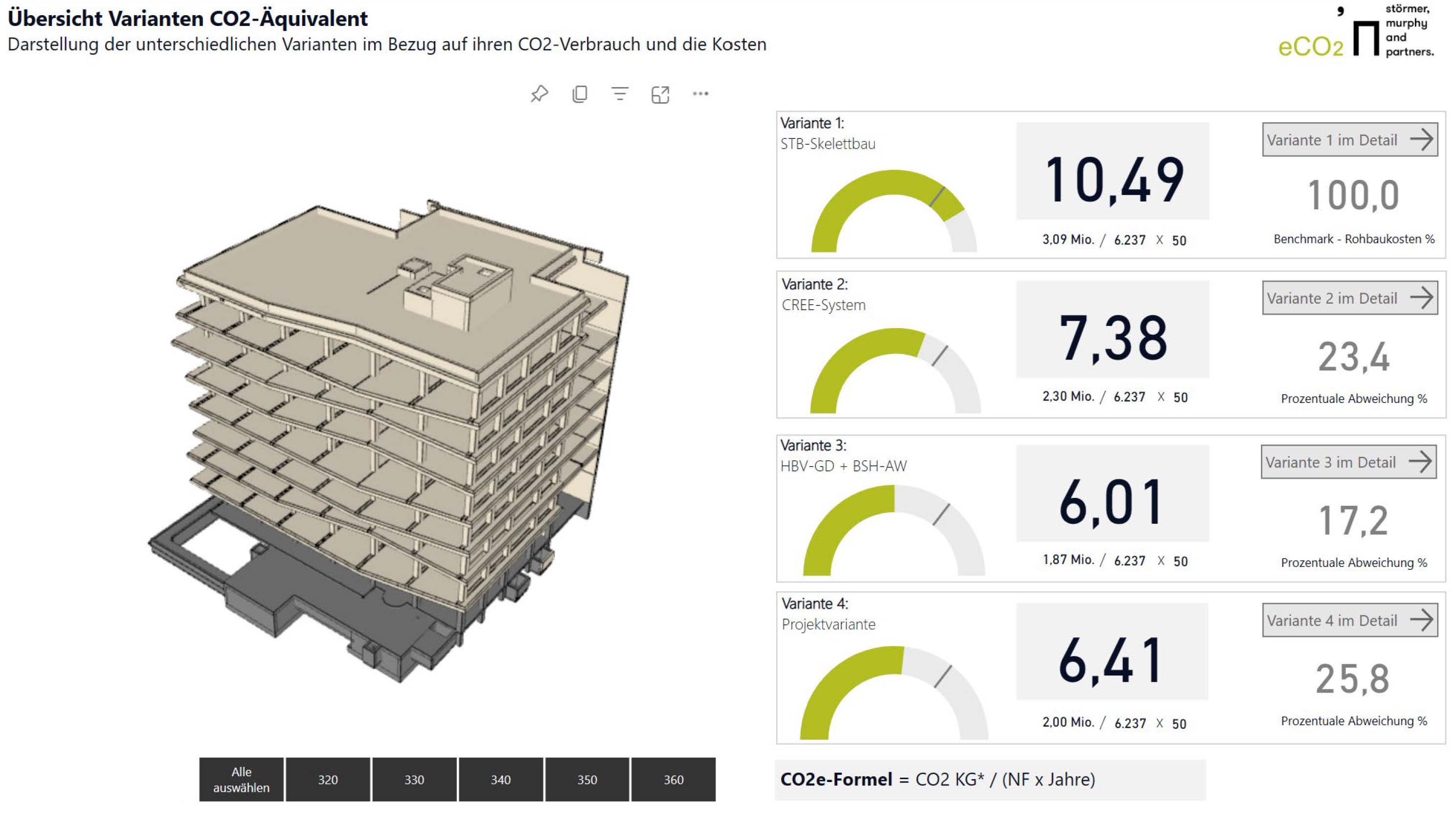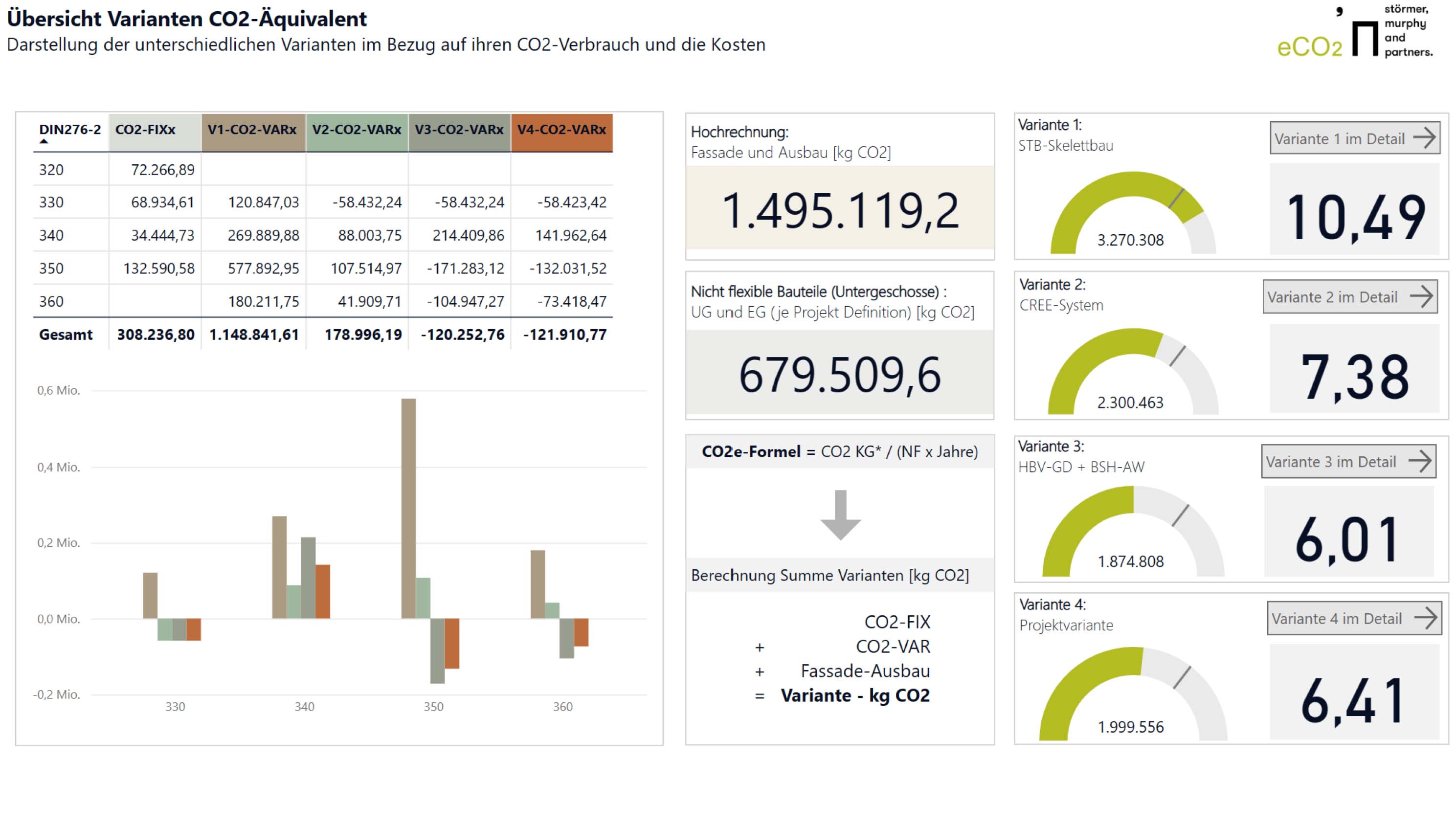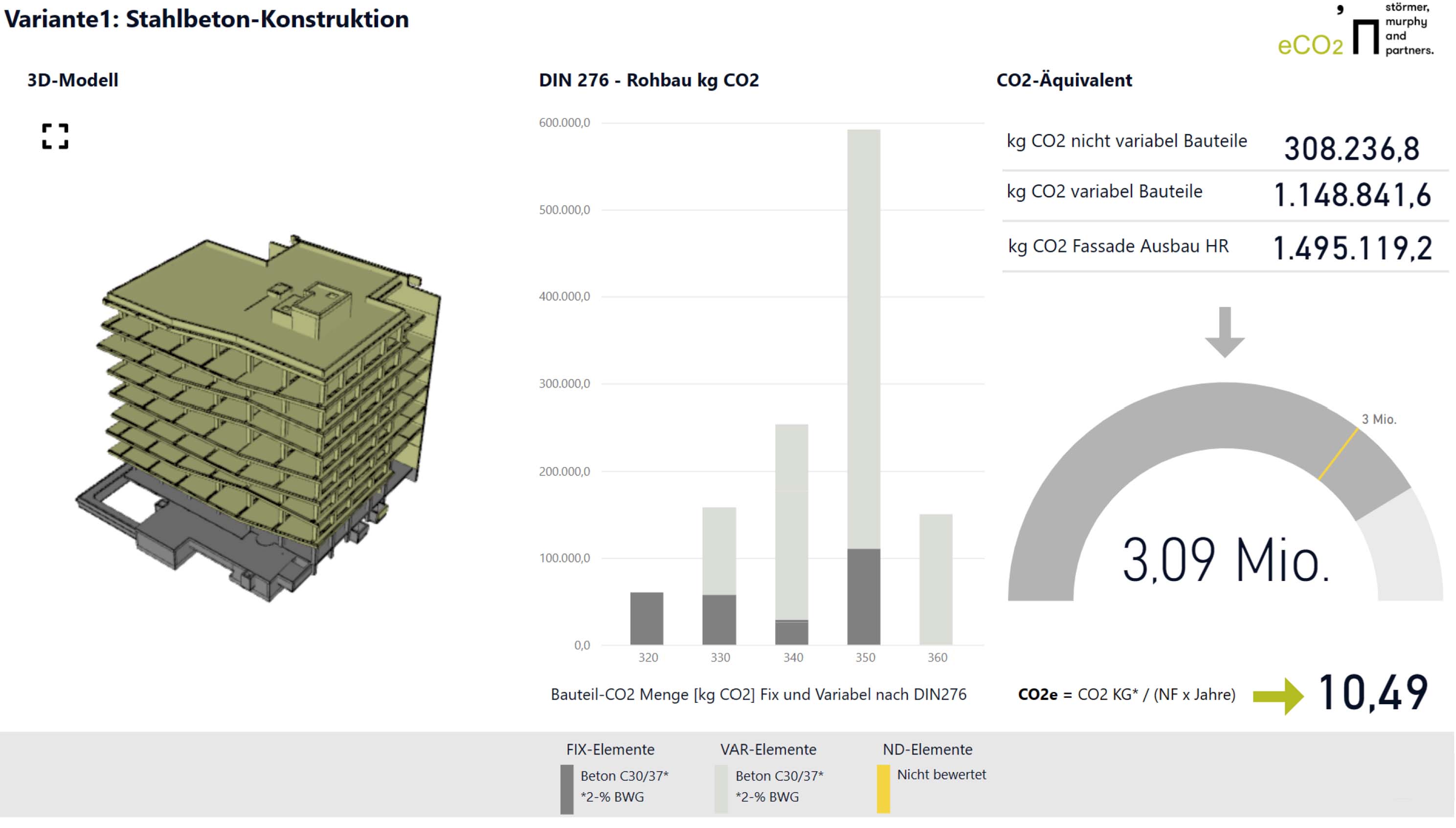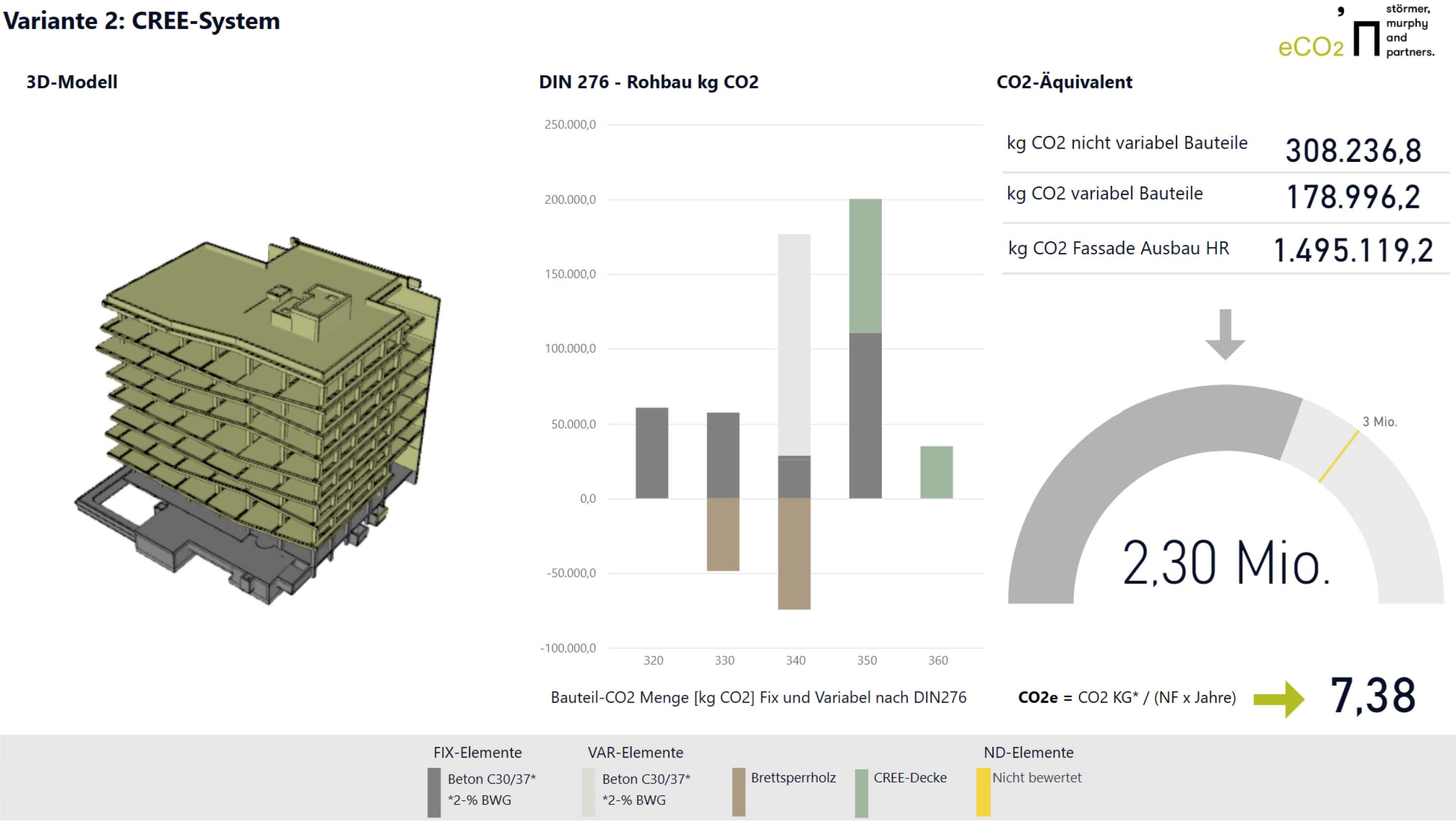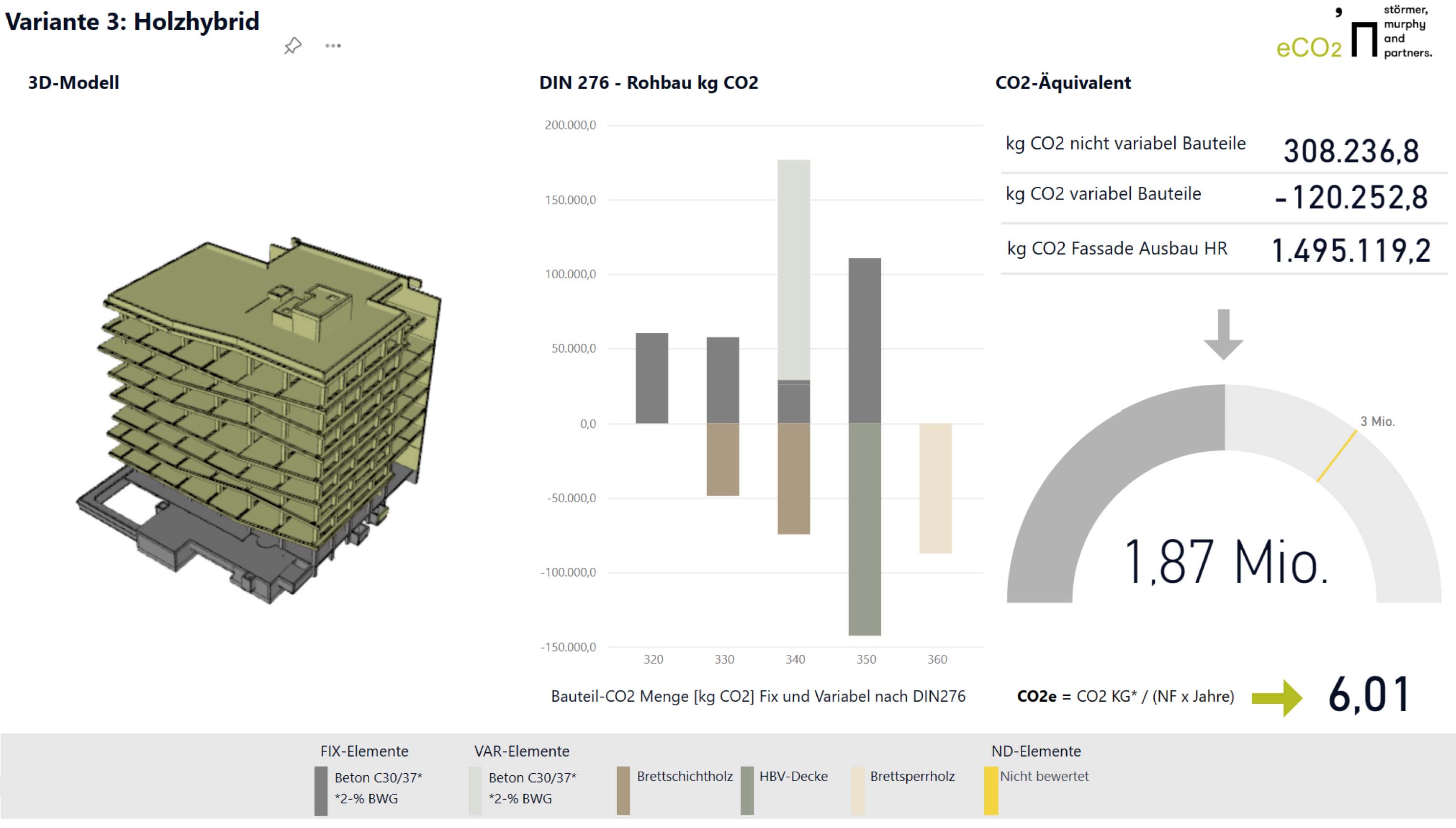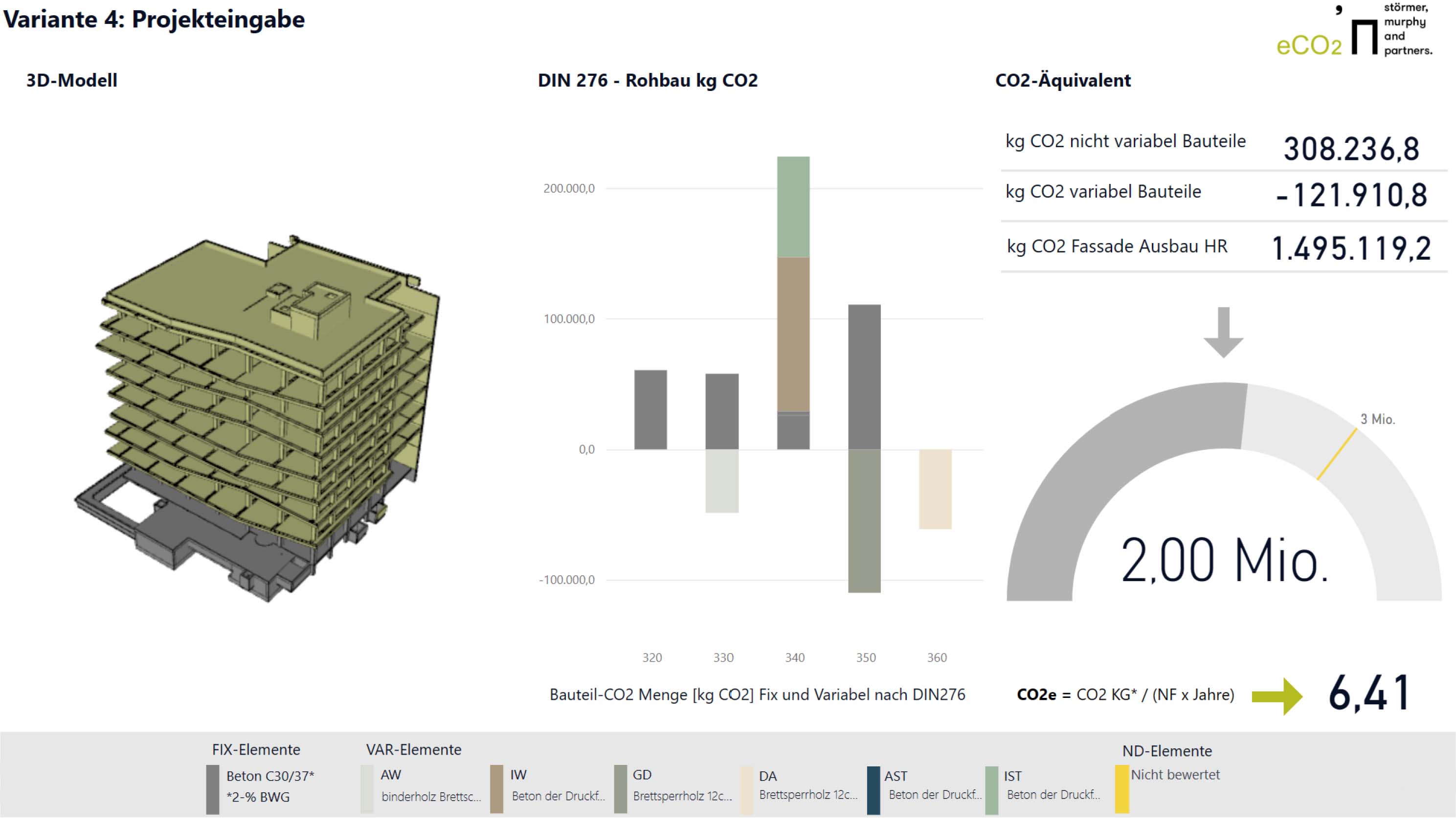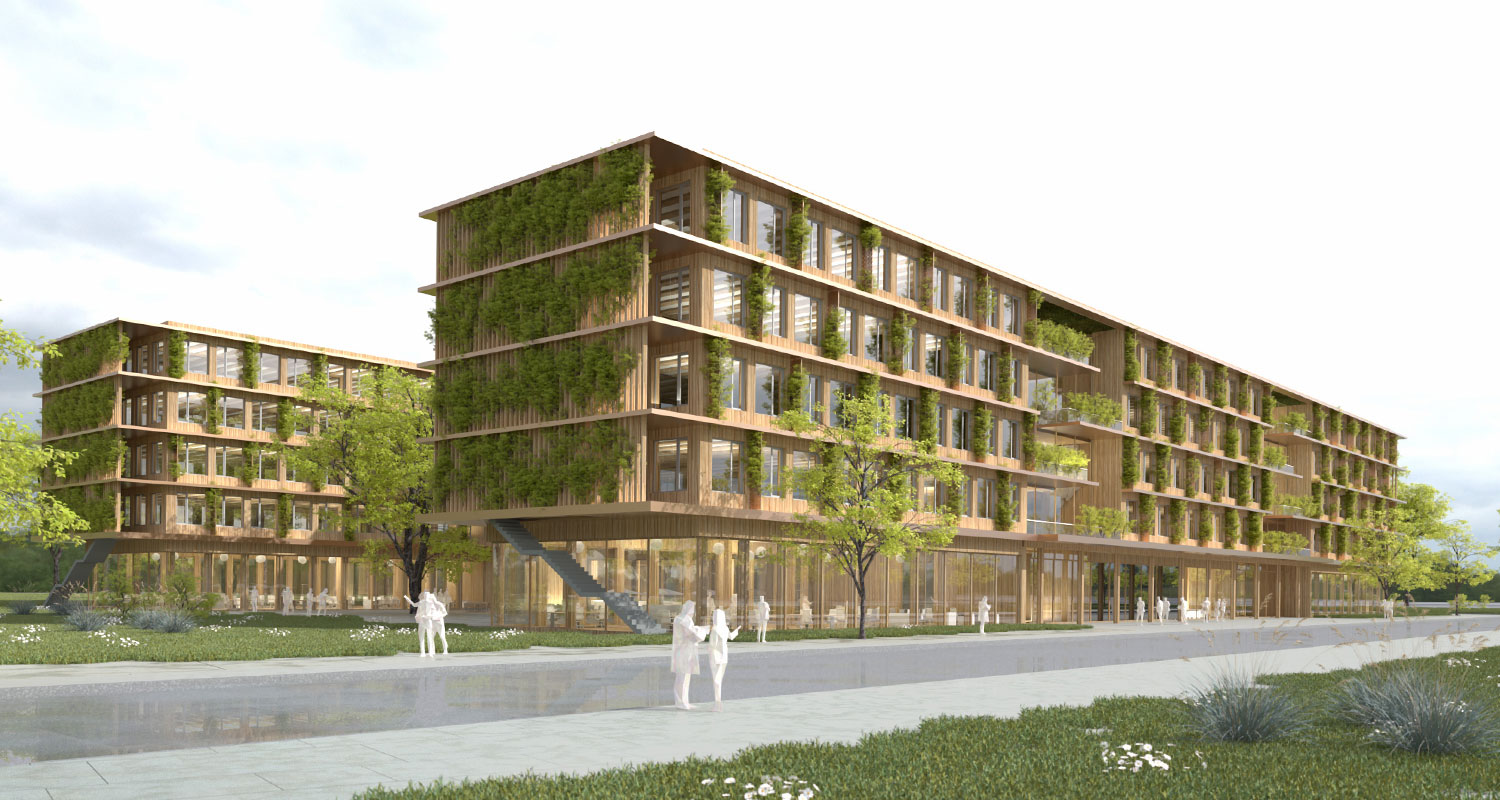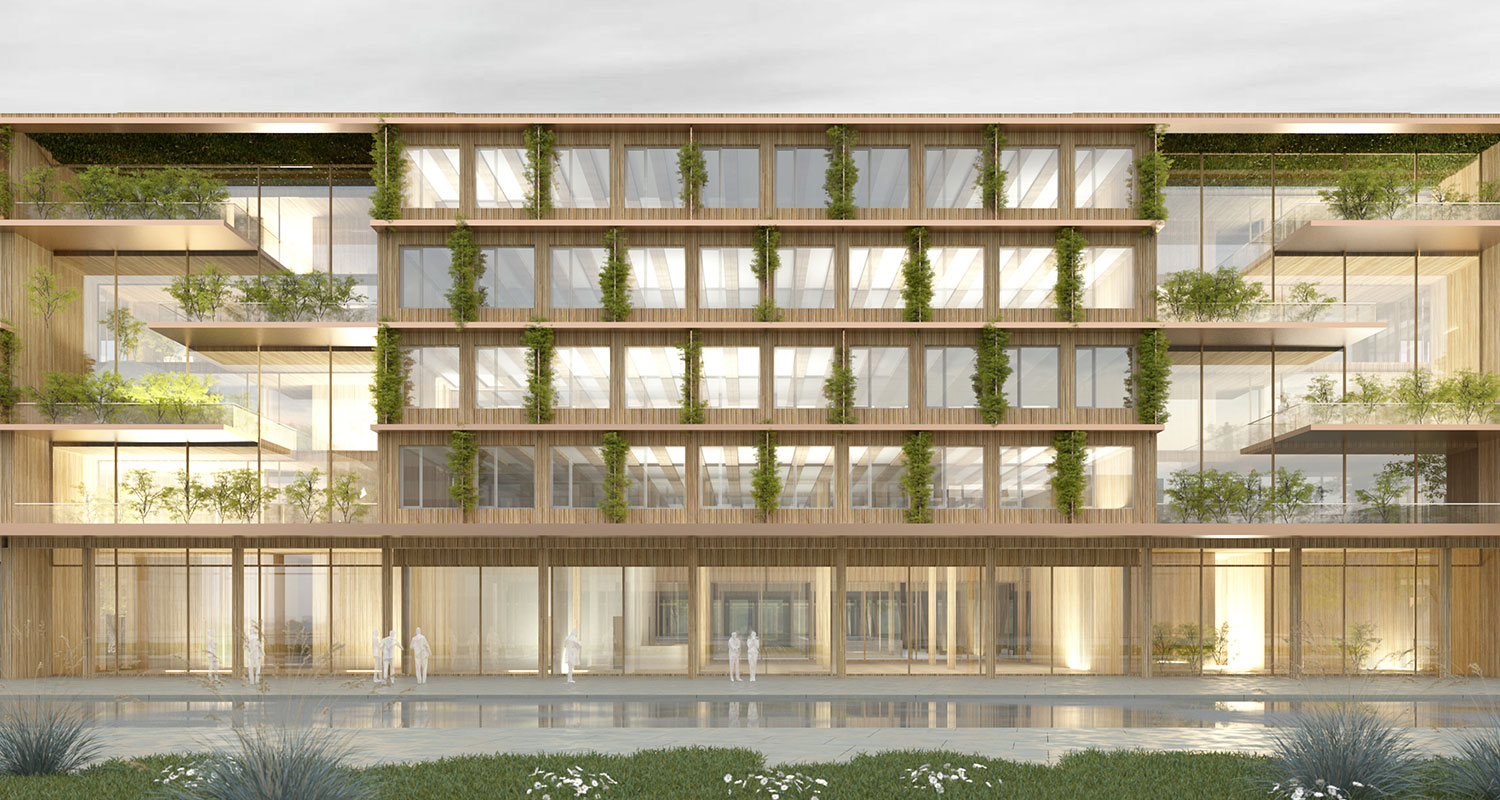Ansatz
Für mehr nachhaltige Architektur
Nachhaltige Architektur entsteht durch die Gestaltung robuster Gebäude mit verantwortungsvollem Materialeinsatz und Ressourcenverbrauch sowie Schaffung einzigartiger Orte mit starker Identität und kultureller Signifikanz.
Es gibt hierfür keine universelle Lösung. Mit unserem Team legen wir deshalb einen besonderen Fokus auf Innovation und Zukunftsfähigkeit, geerdet durch fundiertes Wissen aus jahrzehntelanger Baupraxis. Dabei betrachten wir die verschiedenen Aspekte des nachhaltigen Bauens und die Gebäude in ihrem gesamten Lebenszyklus. Dazu gehört auch, Gewohnheiten zu überdenken, Standards anzupassen und Überzeugungsarbeit zu leisten. Dies tun wir mit Engagement und anspruchsvollen Entwürfen, um Bauten von höchster Qualität und Beständigkeit zu schaffen.
Der Großteil unserer Projekte ist zertifiziert.
Das DGNB-Label so wie auch das Hafen City Umweltzeichen sichern die Umsetzung einer ganzheitlichen Qualität im Sinne der Nachhaltigkeitskriterien Ökologie, Ökonomie und den soziokulturellen und funktionalen Aspekten.
Um CO₂-neutral, rycyclebar und zirkulär zu bauen, erweitern wir stetig unsere Expertise und Netzwerk.
Als Mitglied in der Koalition für Holzbau engagieren wir uns zusammen mit den dort vertretenen Wissenschaftlern, Architekten und Projektentwicklern für den klimaneutralen und ressourcenschonenden Holzbau. Zudem sind wir im Arbeitskreis Nachhaltigkeit der BIM Allianz vertreten und nehmen an der Phase Nachhaltigkeit teil.
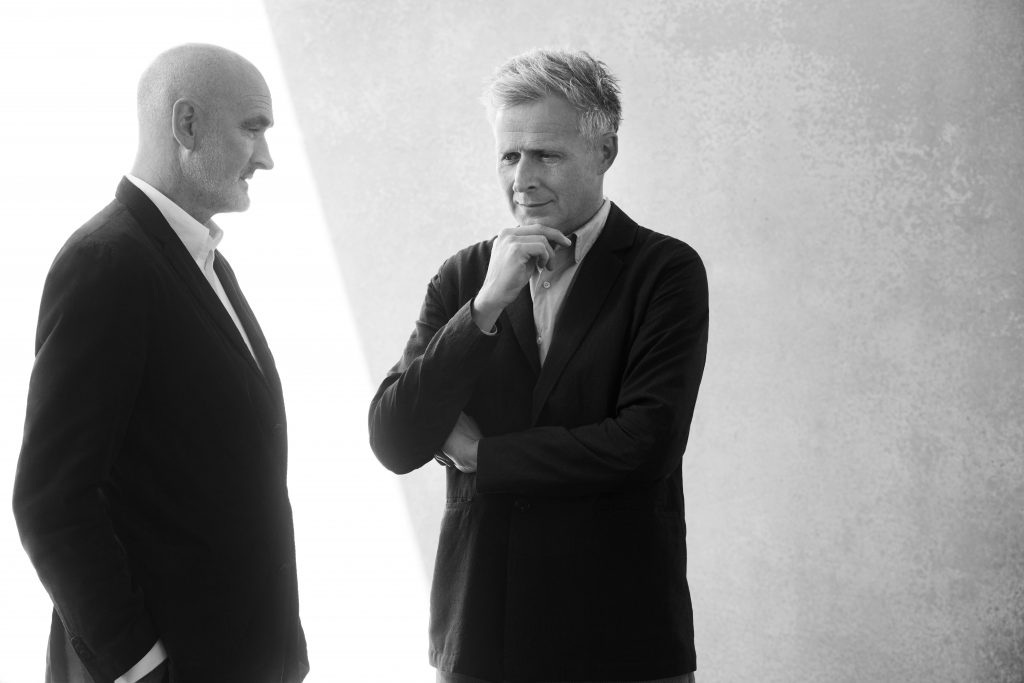
„Ich bin fest davon überzeugt, dass wir schon lange realisiert haben, dass Nachhaltigkeit auf unserer Agenda ist. Zu lange haben Architekten hierüber nur gesprochen, aber wenig umgesetzt. Wie auch andere Holzbau-Projekte von uns, ist Roots ein bahnbrechendes Beispiel, das diese übernommene Verantwortung für gelebte Nachhaltigkeit widerspiegelt.“
Martin Murphy
„Die vielfälltigen Parameter für eine nachhaltige Architekturentwicklung sind bekannt, sie werden in jedem unserer Projekte aufs Neue verhandelt und im Spannungsfeld von gesellschaftlichen, institutionellen und individuellen Interessen umgesetzt.“
Kasimir Altzweig
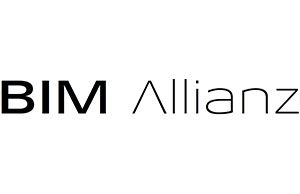
Wir sind im Vorstand der BIM Allianz durch unseren Associate Hanns-Jochen Weyland vertreten.
Damit bereichern wir die strategische Weiterentwicklung der Allianz und bringen uns in ihre Arbeit ein.

Der Trend zur ökologischen und nachhaltiger Architektur manifestiert sich auch im Baumaterial Holz.
Mit unserem Projekt Roots, dem höchsten Holzhochhaus Deutschlands, setzen wir ein Zeichen genau so wie mit der Mitgliedschaft in der Koalition für Holzbau, einer Initiative für das nachhaltige Bauen mit Holz.
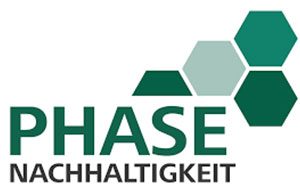
Phase Nachhaltigkeit ist eine gemeinsame Initiative der Bundesarchitektenkammer und der Deutschen Gesellschaft für Nachhaltiges Bauen.
Die Deklaration Nachhaltigkeit dient uns als Grundlage und Gesprächsleitfaden für die Projektzieldefinition, beim Entwurf wie auch im Gespräch mit gemeinsamen Akteuren.
Expertise
Wir schulen unsere ArchitektInnen fortlaufend.
Hierfür haben wir den Arbeitskreis Nachhaltigkeit etabliert sowie diverse Formate wie Lunch and Learn und Round Table bei welchen wir über Themen wie Umsetzbarkeit demontierbarer Details oder Nachhaltigkeit von Materialen diskutieren und unsere Expertise vertiefen.
Mit Hanns-Jochen Weyland als DGNB Auditor und Uta Meins als DGNB Consultant haben wir akkreditierte Experten für nachhaltiges Bauen und die Bewertung von Nachhaltigkeit bei Gebäuden und Quartieren im Hause. So können wir maßgeschneiderte Nachhaltigkeitskonzepte entwickeln und gezielt Nachhaltigkeitszertifizierungen begleiten.
Wir haben in Kooperation mit DIEfabrik – Architekten und Jim Bögershausen das Tool eCO₂ entwickelt, mit welchem sich anhand von Gebäudemodellen in frühen Planungsphasen die Kosten und CO₂-Bilanzen von alternativen Konstruktionsarten miteinander vergleichen lassen.
Um Klimaziele einzuhalten und Energiekosten zu reduzieren, müssen Architekturprojekte immer nachhaltiger geplant werden. Kennwertberechnungen für alternative Konstruktionsarten oder unterschiedliche Materialien lassen sich jedoch erst in späteren Planungsphasen umsetzen, wenn erforderliche Änderungen nicht mehr oder nur noch mit hohem Aufwand möglich sind. Unser Tool eCO₂ führt verschiedene Software-Lösungen zusammen und ermöglicht es vom Wettbewerb bis Leistungsphase 3 Kennwert-Vergleiche von alternativen Planungsansätzen, ohne dass diese schon konkret definiert sein müssen.
Projektentwickler erhalten damit eine schnelle und sichere Entscheidungsbasis für ihre weitere Planung und minimieren das Risiko von später erforderlichen Änderungen. Das Tool ermöglicht eine bislang nicht mögliche Flexibilität und sorgt für deutlich mehr Effektivität und Transparenz am Bau. Das Ergebnis ist ein effizienter Planungsablauf mit optimiertem Verhältnis von Kosten und CO₂-Bilanz.
Konstruktionsvergleich eCO₂
Projekte

1994
Stadtlagerhaus, Hamburg
Umbau eines
Denkmal-
geschützten
Speichers mit Aufstockung
1996
Museum für Kunst und Gewerbe, Hamburg
Umbau und Sanierung
2002
Klimahaus Bremerhaven
Energiekonzept,
Wettbewerb 2. Preis
2010
Helm AG, Hamburg
Modernisierung mit Low-Tec Ansatz im laufenden Betrieb
2011
Intelligent Quarters, Hamburg
Recyclebares Material Keramik
2012
Unter den Linden, Hamburg
Baudenkmal-
Sanierung
2017
Roots, Hamburg
Das höchste Holzhochhaus Deutschlands

2021
Boehringer, Ingelheim
Holzhybrid mit PV-Fassade
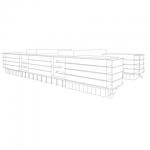
2021
Behrens-Ufer, Berlin
Holzhybrid, Auszeichnung DGNB Platin
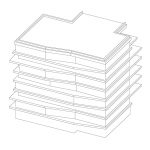
2021
Gascade, Kassel
Holzhybrid mit PV-Fassade
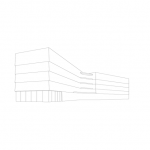
2022
Plambeck, Hamburg
Holzhybrid mit Low-Tec Ansatz
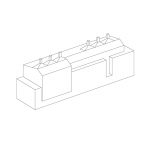
2022
Beensroarredder, Hamburg
Holzhybrid
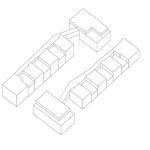
Campus Plambeck
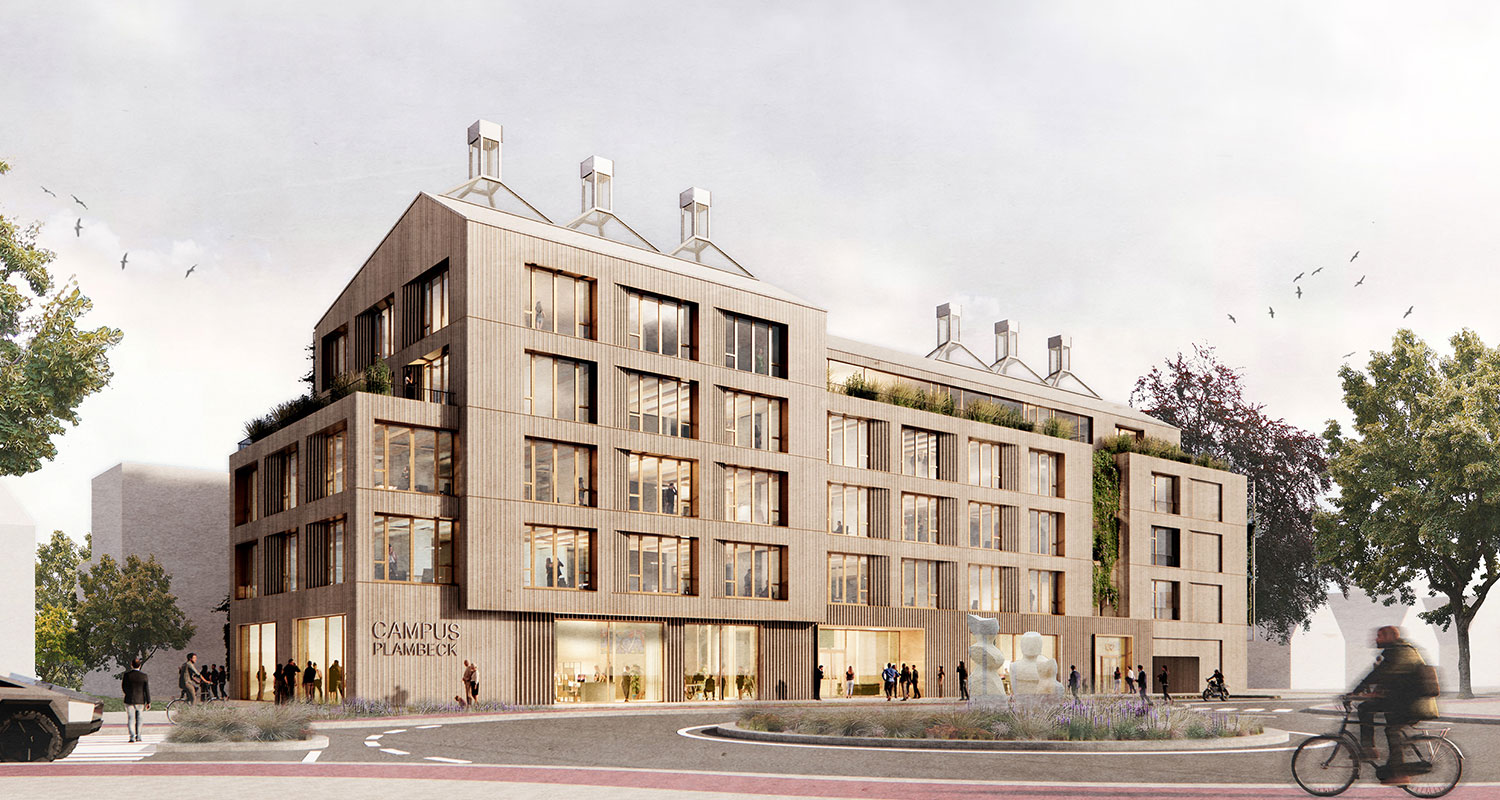
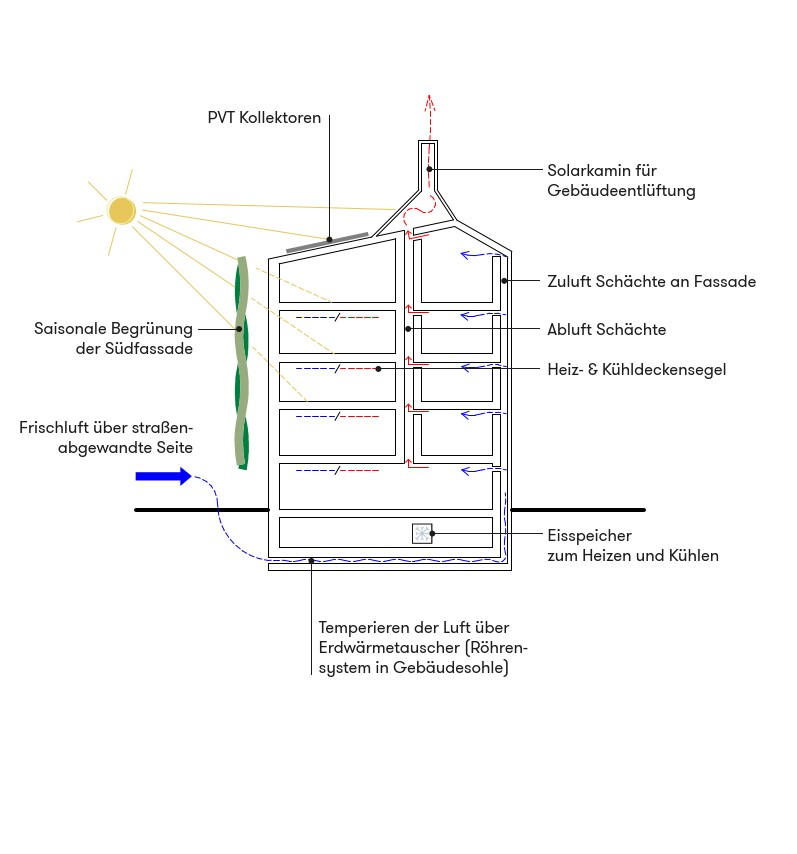
Nebst einer effizienten und rückbaubaren Bauweise mit Holz-Hybrid-Elementen verfolgt der Entwurf einen konsequenten Low-Tech Ansatz.
Das Gebäude wird mittels Solarkamine belüftet und mit einer Wärmepumpe in Verbindung mit einem Eisspeicher beheizt und gekühlt. Im Vergleich mit einem Standardbürogebäude werden im Betrieb ein Drittel weniger Energiekosten verursacht und die CO₂-Emissionen ebenfalls um einen Drittel reduziert.
Mauro Meuli, Projektleiter Störmer Murphy and Partners
Firmenzentrale Gascade
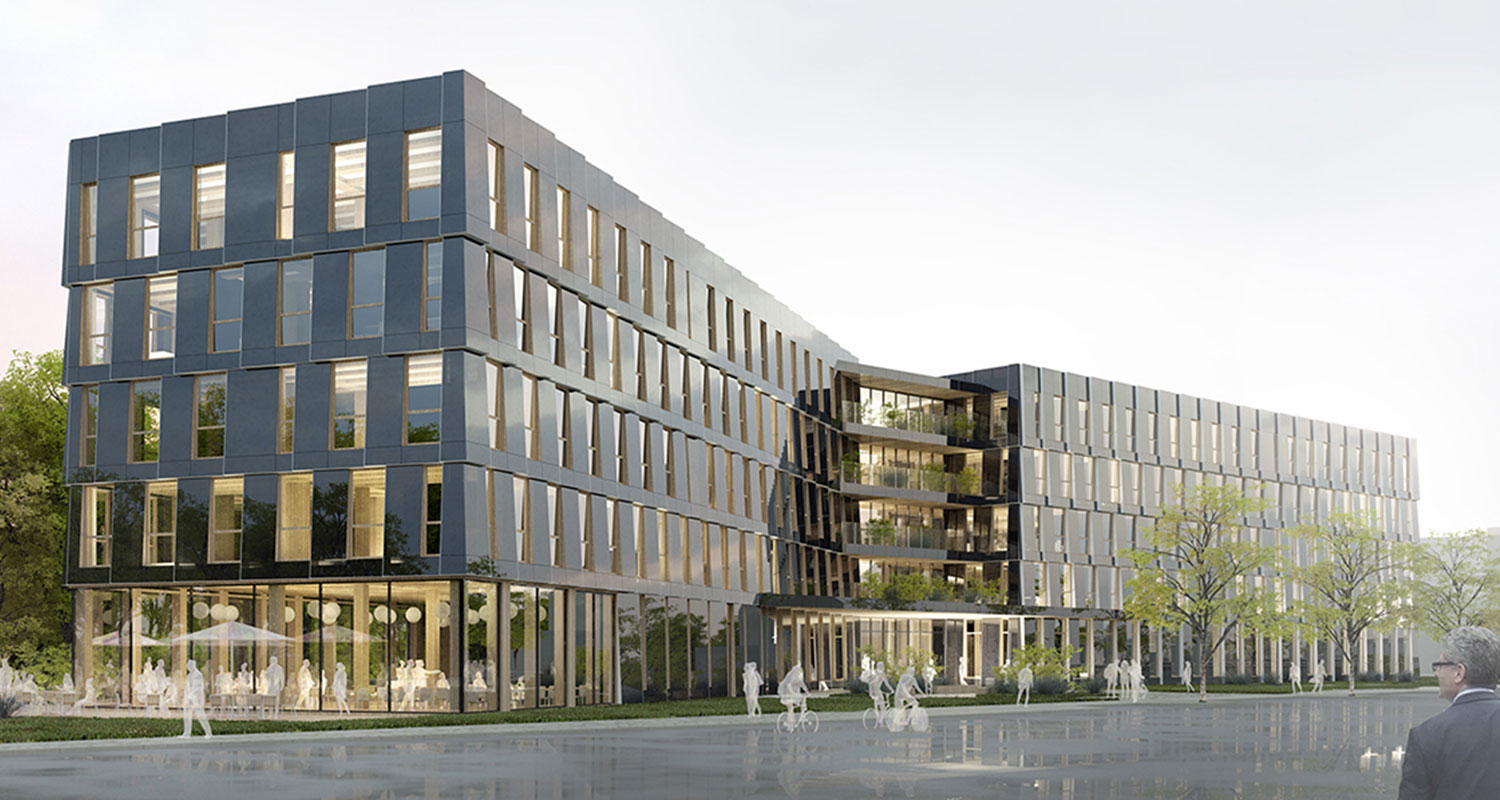
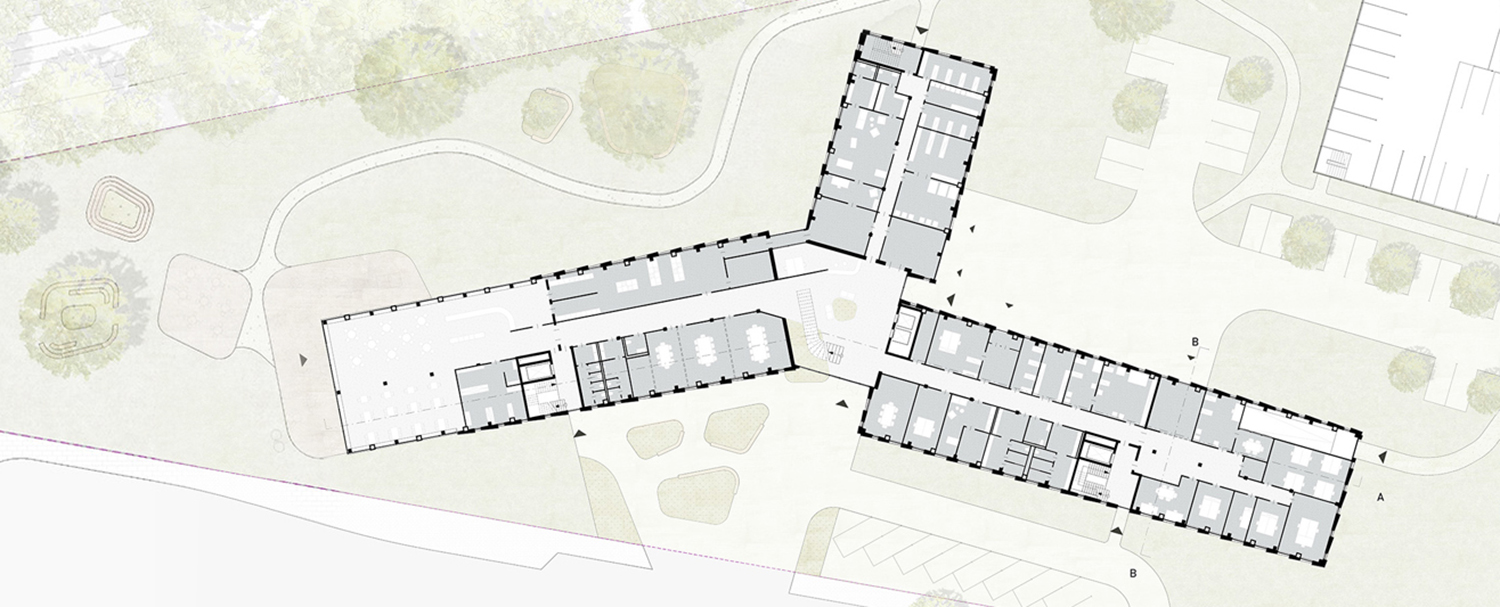
Die Holzhybridbauweise mit regenerativer Energieerzeugung aus Solarstrahlung mittels einer gebäudeintegrierten Photovoltaikfassade (BIPV) und einer PV-Anlage auf dem Dach sind Teile eines ökologisch und wirtschaftlich nachhaltigen Ansatzes.
Stromüberschüsse werden zum Teil per Elektrolyse in Wasserstoff zur späteren Nutzung in einer Brennstoffzelle umgewandelt. Als zusätzlicher Speicher ist ein Salz-Batteriesystem geplant. Die komplette Kühlung und Heizung erfolgt zu 100 % aus regenerativen Energiequellen mittels Geothermie und PV-Anlage. Die Wärmeübergabe in den Räumen erfolgt über individuell regelbare und schnell reagierende Heiz- und Kühldeckensegel, die aufgrund der moderaten Vorlauftemperaturen eine komfortable Strahlungswärme bzw. -kälte im Raum erzeugen. Als zusätzliche Maßnahme zur Optimierung des Primärenegiebedarfes in der Nutzungsphase werden Lufterdwärmetauscher in Form von Erdkanälen geplant. Diese können die Luft für das gesamte Kellergeschoss ohne weiteren Energieeinsatz vortemperieren. Die erforderlichen Stellplätze werden auf dem Grundstück in einem freistehenden rückbaubaren Parkhaus kompakt verortet, welches von einer begrünten offenen Hülle umgeben ist und somit architektonischer Teil der Landschaft wird.
Bürogebäude Boehringer
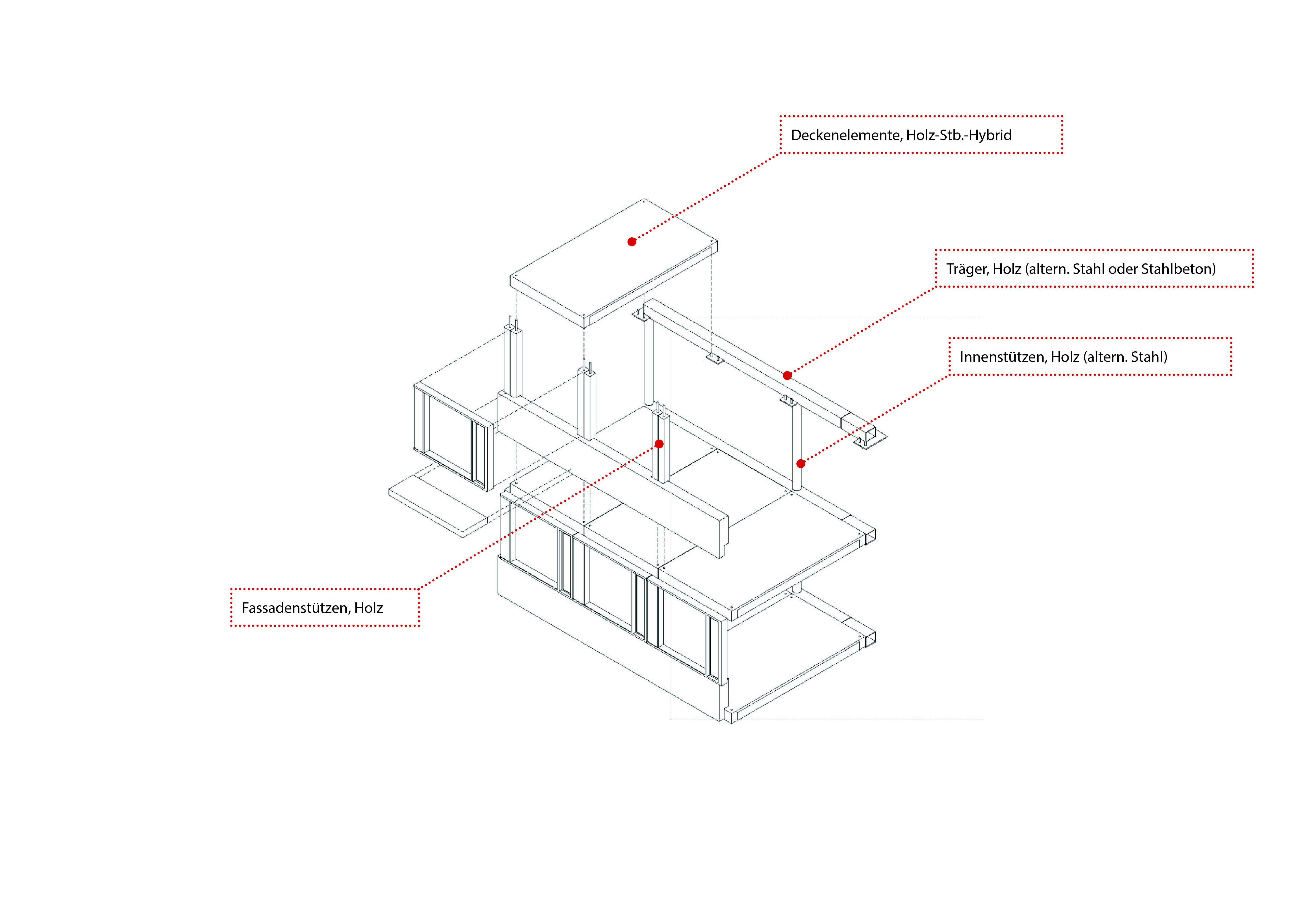
Die kompakte Gebäudeform ohne Versprünge und thermische Auskragungen hat ein günstiges A/V-Verhältnis und trägt durch seine Form zur Reduzierung des Energiebedarfs, der Transmissionswärmeverluste und somit zur Nachhaltigkeit bei.
Nicht tragenden Außenwände werden modular in Elementbauweise im Werk hergestellt und zur schnellen Montage mit einem hohem Fertigungsgrad angeliefert. Durch die Konstruktion ist ein hoher Grad an lösbaren Verbindungen gegeben, die eine einfache Demontage und die Recyclingfähigkeit der Materialien möglich machen. Sämtliche Dachflächen sind extensiv begrünt und dienen somit als Verdunstungsflächen. Über große Teile der Dachflächen ist eine aufgeständerte PV-Anlage zur lokalen Erzeugung erneuerbarer Energie vorgesehen. Im Vergleich zur konventionellen Bauweise spart der Entwurf im Rohbau 43,5 % CO₂ und das Gesamtgebäude 21,5% CO₂ ein. Dem hohen ökologischen Anspruch wird durch einen effizienzoptimierten Energiekreislauf mit Wärmepumpen- und Eisspeichertechnik Rechnung getragen. Das Resultat sind geringe Betriebskosten bei gleichzeitig hohem Arbeitsplatzkomfort.
Mauro Meuli, Projektleiter Störmer Murphy and Partners
Bürogebäude Behrens-Ufer
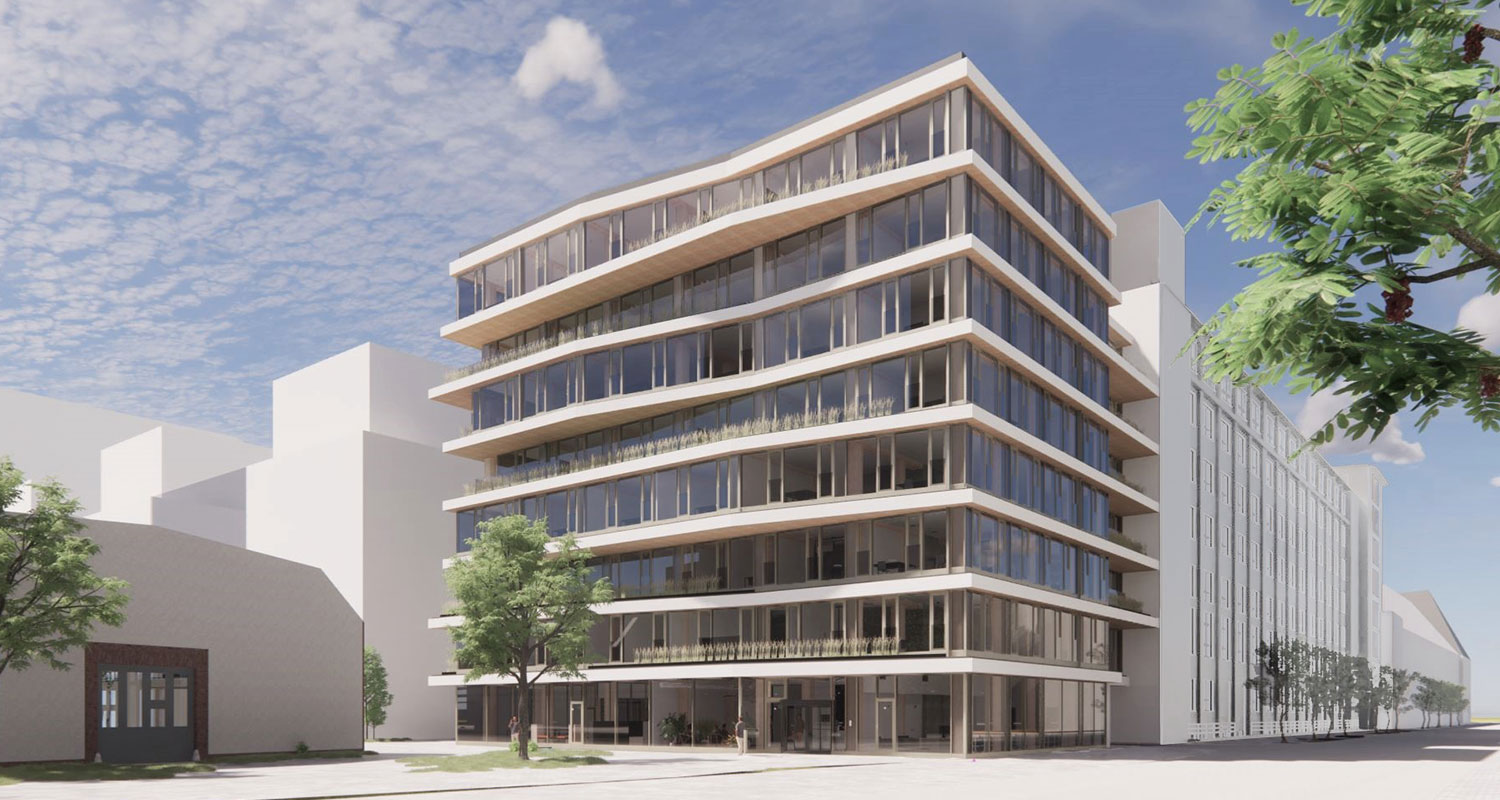
An ein denkmalgeschütztes ehemaliges Produktions- und Bürogebäude anschließender Neubau ist als Holz-Skelettbau mit aussteifendem Stahlbetonkern konzipiert.
Die großflächige Glasfassade des Hybridgebäudes zeigt sich zurückhaltend und ruhig gerastert entlang der nördlich angrenzenden Ostendstraße. Nach Süd-Osten öffnet sich das Gebäude jedoch spürbar und der Baukörper gewinnt, durch die etagenweise abwechselnd auskragenden hölzernen Geschossplatten, an Dynamik. Die so entstehenden begrünten Freibereiche, wie auch der intensiv begrünte Dachgarten ermöglichen den Nutzern als besondere Qualität, den Ausblick über das Quartier und die im Süden angrenzende Spree. Wesentlich für die Materialauswahl in Innenräumen war eine möglichst gute CO₂-Bilanz und gute Kreislauffähigkeit der Baustoffe. Weiterhin wurde zur besseren Rückbaubarkeit darauf geachtet, die Menge an Verbundkonstruktionen zu reduzieren. Der angestrebte energetische Standard wurde für eine nach BEG „Effizienzhaus-Stufe 40“ Förderfähigkeit ausgelegt. Darüber hinaus wurde für das Gebäude im Rahmen der Nachhaltigkeitszertifizierung nach DGNB, der Prägungsgrad „Platin“ erreicht.
Roots
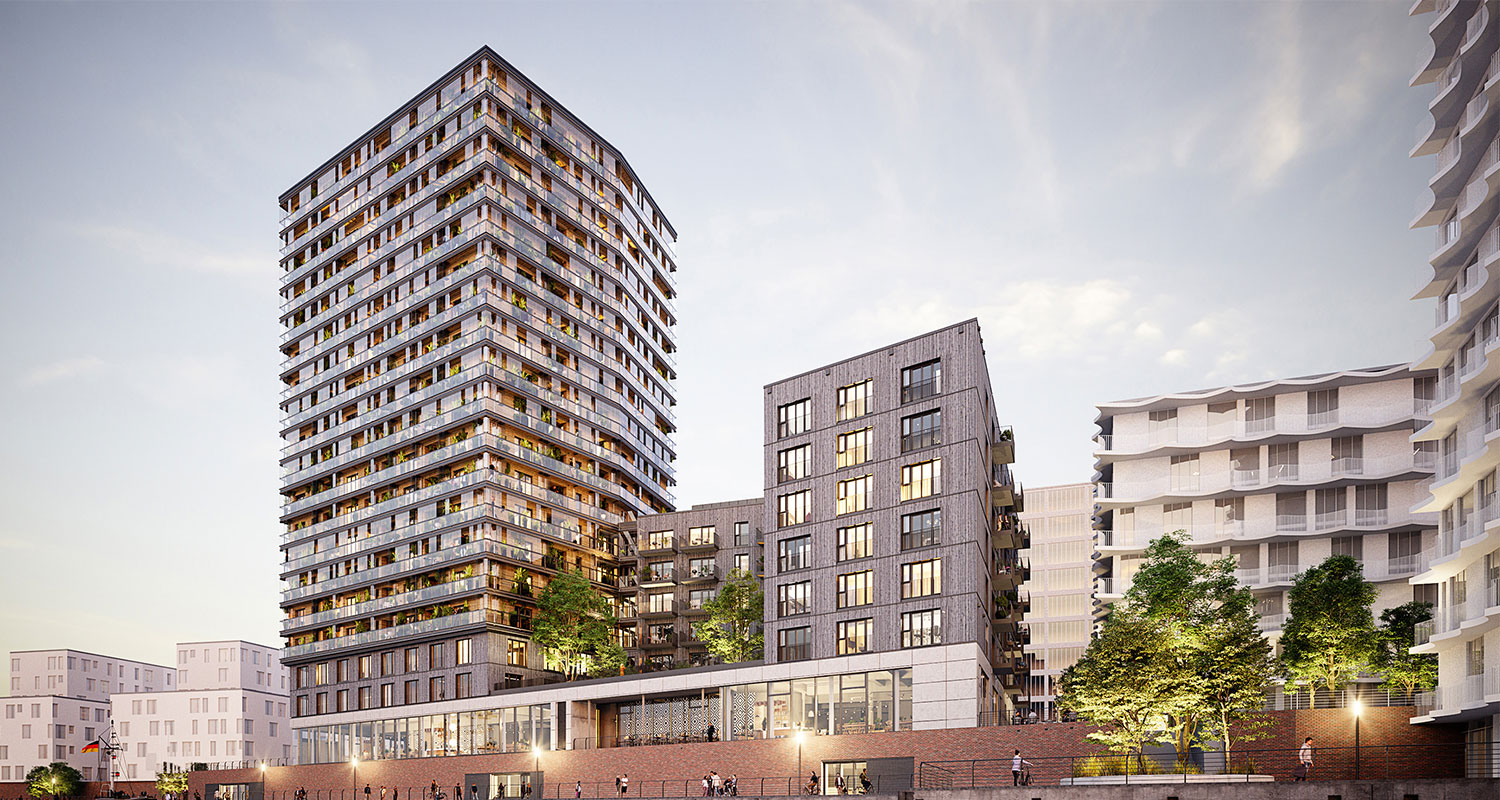
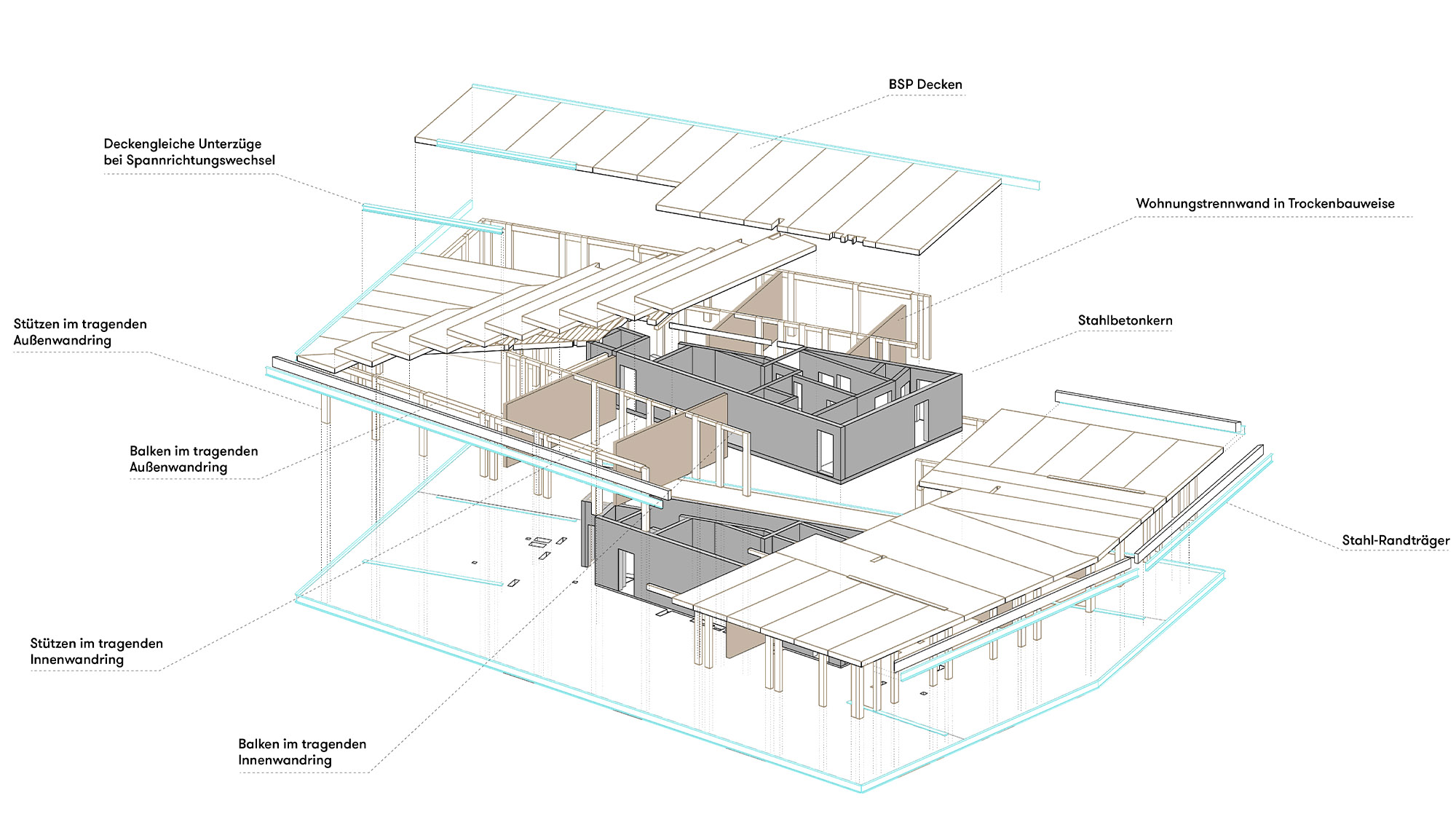
Beim Bau des Roots werden ca. 5.500m³ PEFC-zertifiziertes Konstruktionsholz aus nachhaltig bewirtschafteten Österreichischen Wäldern verbaut.
Im Vergleich zu einem konventionell errichteten Gebäude werden dadurch ca. 31% CO₂ (ca. 3520t) eingespart. Darüber hinaus wird das Gebäude nach dem HafenCity Umweltzeichen im Platinstandard zertifiziert. Es werden sämtliche Stellplätze in der Tiefgarage für E-Ladestationen vorgerüstet. Die etwa 25% dem Carsharing vorbehaltenen Stellplätze sind von Beginn an für E-Mobilität ausgestattet. Dachflächen werden wo immer möglich begrünt. CO₂ Footprint*: ca. 6,01 kg CO₂ e/m² a gesamtes Gebäude.
Beensroaredder
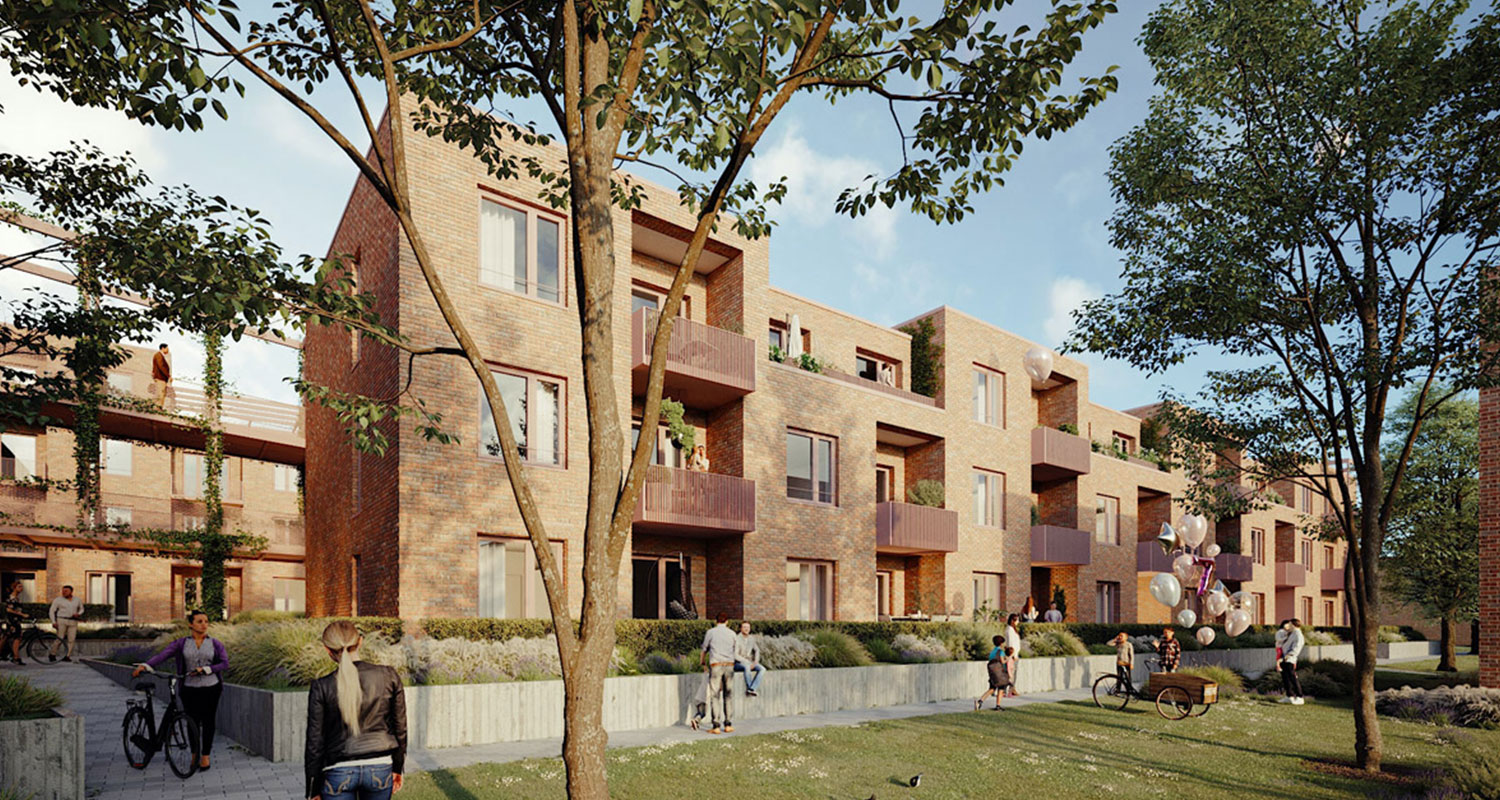
Das Projekt zeichnet sich in den Grundzügen der Konzeption durch einen hohen Wiederholungsfaktor aus.
Die Gebäude sind in ressourcenschonender Holztafelbauweise geplant. Der Holzbau ermöglicht einen sehr hohen Elementierungs- und Vorfertigungsgrad, so dass die Bauteile im Werk produziert und in kurzer Bauzeit vor Ort montiert werden können. Im Außenbereich und für die Fassade werden nur wartungsarme Materialien verwendet. Der hohe energetische Standard bewirkt eine Reduktion des Energieverbrauches im laufenden Betrieb, der gebäudetechnische Aufwand wird konsequent auf ein Minimum reduziert. Durch eine Holz-Hybrid-Konstruktion kann in der Betrachtung nur auf die Herstellungsphase bezogen fast ein Viertel kgCO2– äqv. im Vergleich zu einer Stahlbetonkonstruktion eingespart werden. Bei optimaler Ausnutzung aller Recyclingpotenziale lässt sich das Einsparpotenzial weiter verbessern.



